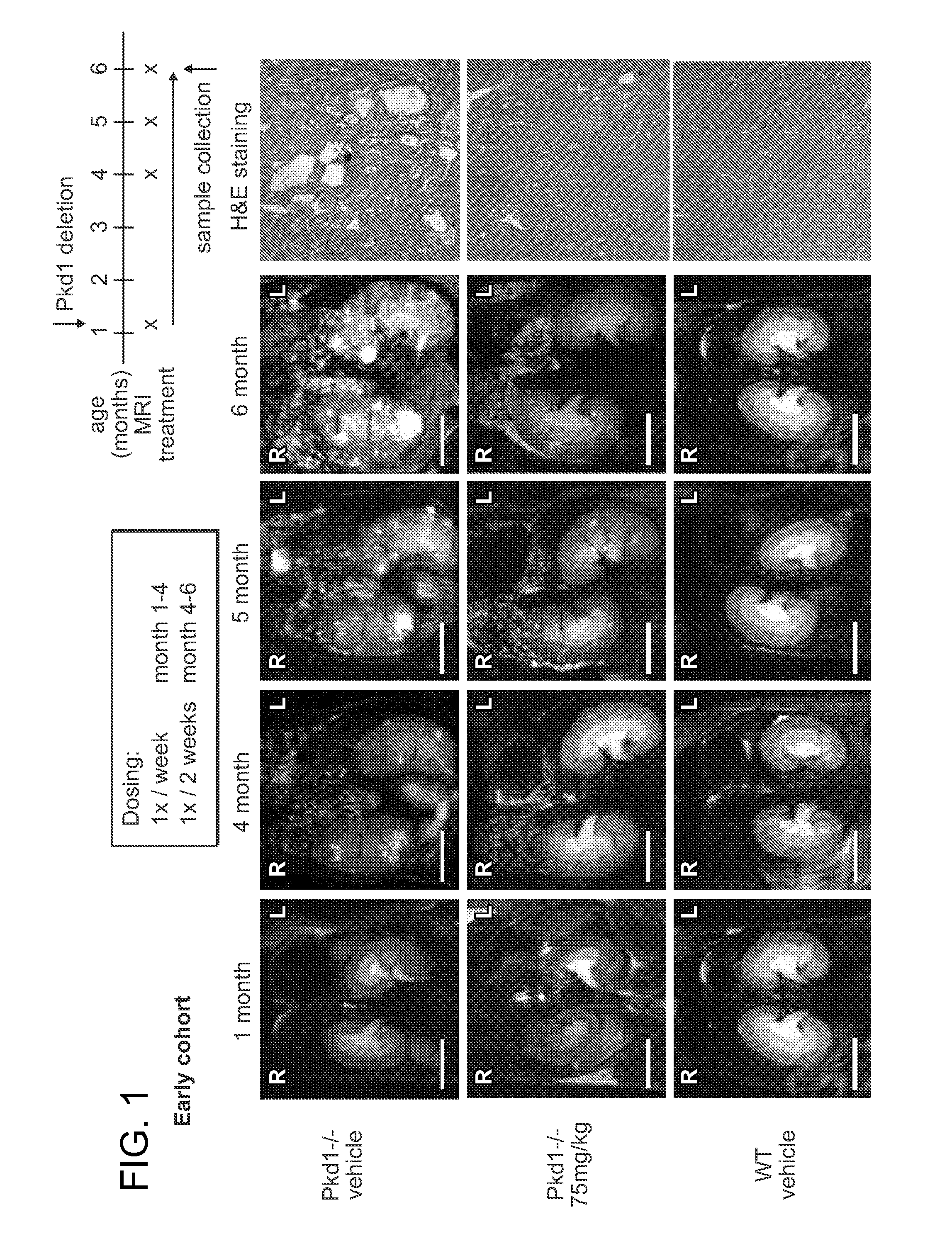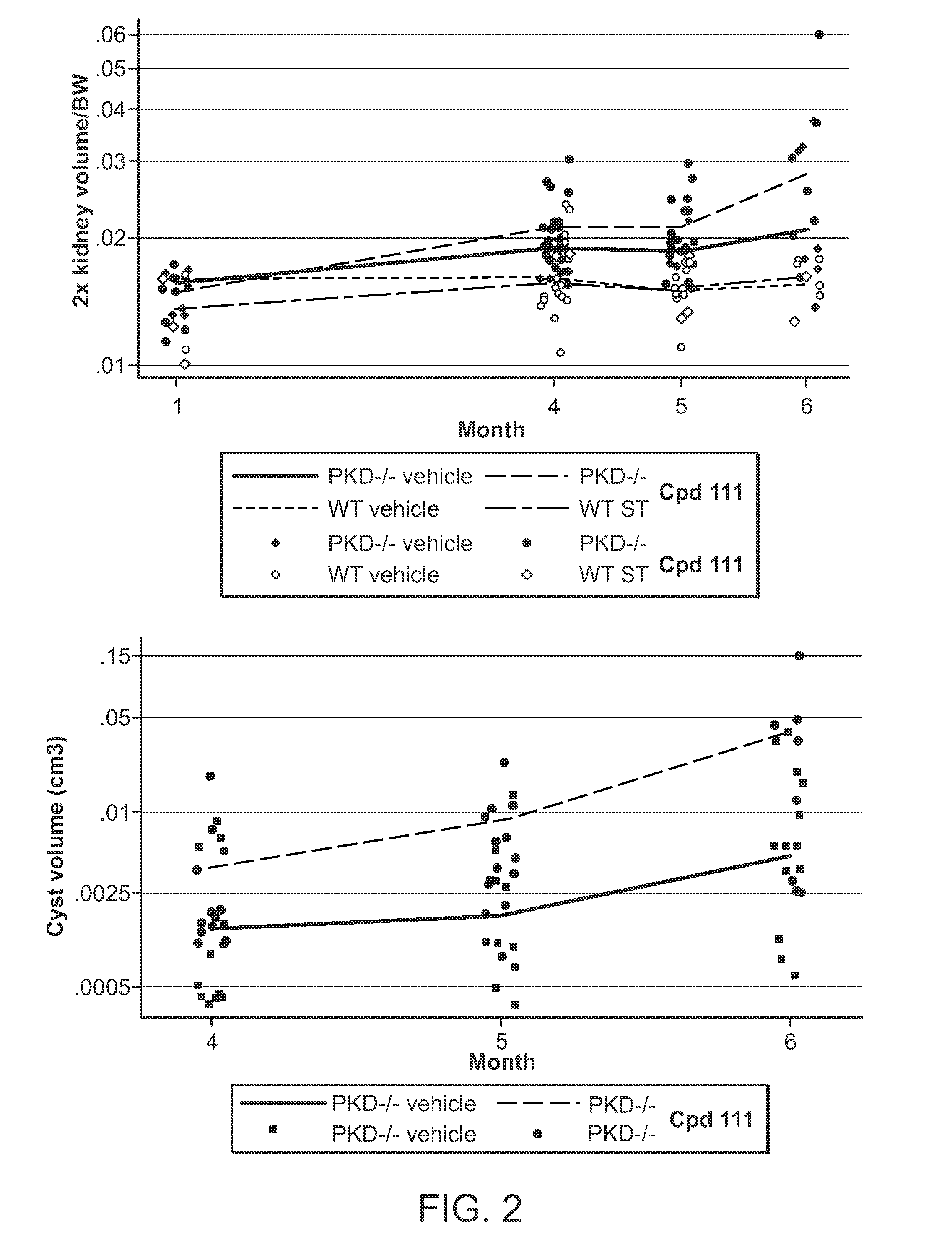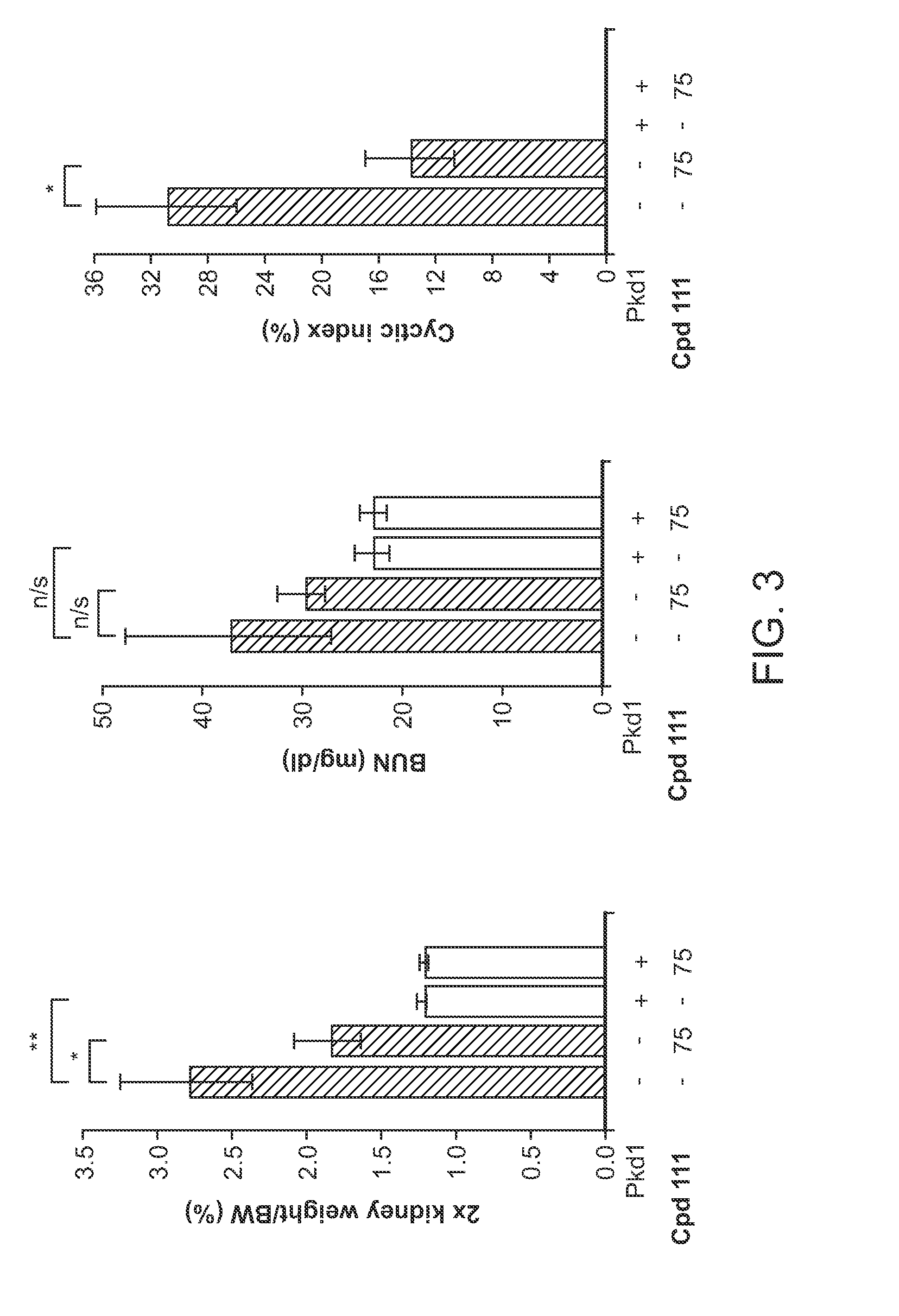Treating polycystic kidney disease with hsp90 inhibitory compounds
a technology of inhibitory compounds and polycystic kidneys, which is applied in the direction of biocide, drug compositions, animal repellents, etc., can solve the problems of unsatisfactory current chemotherapy, dismal prognosis for the majority of patients diagnosed with cancer, and less likely that a therapeutic agent that acts on one molecular target will be fully effective,
- Summary
- Abstract
- Description
- Claims
- Application Information
AI Technical Summary
Benefits of technology
Problems solved by technology
Method used
Image
Examples
example 1
Synthesis of Hsp90 Inhibitory Compounds
[0171]The Hsp90 inhibitory compounds used in the disclosed pharmaceutical compositions and methods herein can be prepared according to the procedures disclosed in U.S. Patent Publication No. 2006 / 0167070, and WO2009 / 023211.
example 2
Degradation of Hsp90 Client Proteins via Inhibition of Hsp90 Activity
[0172]A. Cells and Cell Culture
[0173]Human high-Her2 breast carcinoma BT474 (HTB-20), SK-BR-3 (HTB-30) and MCF-7 breast carcinoma (HTB-22) from American Type Culture Collection, VA, USA were grown in Dulbecco's modified Eagle's medium with 4 mM L-glutamine and antibiotics (100 IU / ml penicillin and 100 ug / ml streptomycine;GibcoBRL). To obtain exponential cell growth, cells were trypsinized, counted and seeded at a cell density of 0.5×106 cells / ml regularly, every 3 days. All experiments were performed on day 1 after cell passage.
[0174]B. Degradation of Her2 in Cells After Treatment with a Compound of the Invention
[0175]1. Method 1
[0176]BT-474 cells are treated with 0.5 μM, 2 μM, or 5 μM of 17AAG (a positive control) or 0.5 μM, 2 μM, or 5 μM of a compound of the invention overnight in DMEM medium. After treatment, each cytoplasmic sample is prepared from 1×106 cells by incubation of cell lysis buffer (#9803, cell Sig...
example 3
Compound 111's Inhibition of Cyst Formation and Kidney Growth in Pkd− / − Mice
[0181]Mouse Strains and Drug Treatment
[0182]All experiments involving mice were approved by the Institutional Animal Care and Use Committee of Fox Chase Cancer Center. Conditional Pkd1− / − mice using the Cre-flox regulatory system for targeted inactivation of the Pkd1 gene in vivo were kindly provided by Gregory Germino (National Institute of Diabetes and Digestive and Kidney Diseases). Pkd1fl / fl;Cre / Esr1+ (referred to as Pkd1− / −) and control mice (Pkd1fl / fl;Cre / Esr1−; referred to as Control) mice were injected intraperitoneally with tamoxifen (250 mg / kg body weight) on postnatal day P37 / P38 (+ / −1 day) to induce Pkd1 deletion in the test group.
[0183]Compound 111 was formulated in 5% dextrose titrated to pH 4, and administered by tail vein injection in anesthetized mice under sterile conditions using a volume of 10 μl / g body weight. Vehicle treated mice were injected with 5% dextrose only. To investigate the a...
PUM
| Property | Measurement | Unit |
|---|---|---|
| pH | aaaaa | aaaaa |
| pH | aaaaa | aaaaa |
| pH | aaaaa | aaaaa |
Abstract
Description
Claims
Application Information
 Login to View More
Login to View More - R&D
- Intellectual Property
- Life Sciences
- Materials
- Tech Scout
- Unparalleled Data Quality
- Higher Quality Content
- 60% Fewer Hallucinations
Browse by: Latest US Patents, China's latest patents, Technical Efficacy Thesaurus, Application Domain, Technology Topic, Popular Technical Reports.
© 2025 PatSnap. All rights reserved.Legal|Privacy policy|Modern Slavery Act Transparency Statement|Sitemap|About US| Contact US: help@patsnap.com



